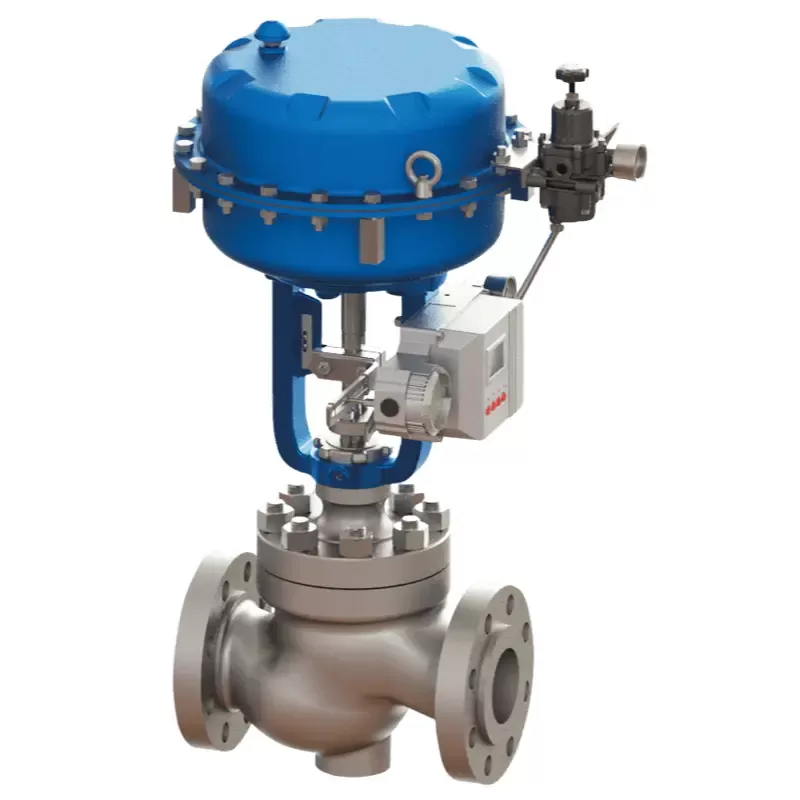Notifications

7 minutes, 14 seconds
-13 Views 0 Comments 0 Likes 0 Reviews

We are a leading China control valve manufacturer, providing high-quality valves and control actuators designed to meet the specific needs of various industries.
Control valves are essential in managing flow, pressure, and temperature in industrial fluid systems. A key factor influencing valve performance is the trim design, particularly whether it uses an unbalanced or balanced trim. Choosing the right trim is crucial for system efficiency, durability, and application suitability—especially under conditions involving corrosion or erosion.
This article outlines the differences between unbalanced and balanced trim control valves, highlights their advantages and limitations, and provides guidance on selecting the appropriate trim and materials for demanding environments.
Valve trim refers to the internal, replaceable components of a control valve that come into direct contact with the process fluid. These parts regulate flow and pressure while ensuring a reliable seal. Key elements include:
Stem – Transmits actuator movement to the plug or disc
Seat – Provides the sealing surface for shutoff
Disc/Plug – Controls flow by changing position
Back Rings – Support and align internal components
Guide Bushings – Maintain accurate movement and alignment
Packing/Seals – Prevent leakage around the stem
While the valve body and bonnet also contact the fluid, they are considered permanent structural parts, not trim.
The design and material of valve trim play a pivotal role in determining how well a control valve performs, how long it lasts, and how often it needs maintenance. Selecting the right trim ensures better control, fewer failures, and lower lifecycle costs.
There are two main control valve trim designs, each with unique operational characteristics:
Uses a solid plug without pressure compensation
Exposed to full differential pressure (ΔP)
Requires a larger actuator to overcome fluid forces
Offers precise control
Best suited for low-pressure or precision control applications
Integrates pressure-equalizing features (e.g., balance holes in the plug)
Minimizes the net force on the plug
Allows for smaller actuators
Ideal for high-pressure conditions and large pressure drops
Reduces wear and improves longevity
In an unbalanced design, fluid pressure acts across the entire plug surface, generating a high force (F = P × A) that the actuator must counter. This makes the actuator size and strength critical, especially under high-pressure conditions.
Single-seated globe valves (most prevalent)
Some double-seated valves (partially balanced)
Superior Control Sensitivity – Excellent for precision flow control
Simple Design – Fewer moving parts; easier to maintain
Lower Cost – Generally more affordable than balanced designs
Cavitation Resistance – Less prone to damage from vapor bubble collapse
High Actuator Force Requirement – Large actuators needed for high-pressure systems
Limited to Low-Pressure Applications – Performance can degrade under high ΔP
Balanced trims feature pressure equalization through holes or pathways in the plug. This allows pressure to act on both sides, significantly reducing the net force on the plug and minimizing actuator effort.
Cage-guided globe valves
Balanced-plug globe valves
Certain rotary control valves
Smaller Actuator Required – More compact and cost-effective actuation
Handles High Pressure Drops – Ideal for systems with large ΔP
Improved Durability – Less seat wear, longer valve life
Reduced Vibration and Noise – Better pressure distribution leads to stable operation
More Complex Design – Additional balance features increase maintenance difficulty
Higher Initial Cost – Precision manufacturing adds to the price
Leakage Potential – Balance holes may introduce minor leak paths
For long-term reliability, selecting the right trim material is as important as choosing the trim design.
Choose materials compatible with the process fluid to prevent degradation.
Stainless Steel (SS304/SS316) – General corrosion resistance
Hastelloy or Monel – Excellent for aggressive chemical services
Titanium – Best for chloride-rich or acidic environments
For abrasive or high-velocity fluids, harder materials extend trim life.
Stellite – Ideal for erosive slurries
Tungsten Carbide – Exceptional hardness and erosion resistance
Inconel – Suitable for high-temperature steam and harsh environments
| Service Condition | Recommended Trim Material |
|---|---|
| Water / Steam | Stainless Steel (SS316) |
| Highly Corrosive Fluids | Hastelloy, Monel |
| Abrasive Slurries | Stellite, Tungsten Carbide |
| High-Temperature Steam | Inconel |
| Feature | Unbalanced Trim | Balanced Trim |
|---|---|---|
| Actuator Force | High | Low |
| Cost | Lower | Higher |
| Design Complexity | Simple | More Complex |
| Best Application | Precision / Low ΔP | High Pressure / Large ΔP |
| Cavitation Resistance | Better | Moderate |
| Maintenance | Easier | More Involved |
Choosing between unbalanced and balanced trim control valves depends on several factors:
System pressure – High ΔP favors balanced trim
Actuator size and force – Unbalanced requires more force
Control accuracy – Unbalanced offers finer adjustment
Budget and maintenance – Simpler trims cost less and are easier to service
Fluid properties – Corrosive or abrasive fluids require the right material pairing
By understanding these key differences, engineers can make informed decisions that lead to longer-lasting, more efficient valve performance and reduced operational costs.
Final Tip: Whether you need precision in low-pressure settings or resilience in high-pressure systems, selecting the right trim design—and matching it with the right material—is essential for reliability and efficiency.

